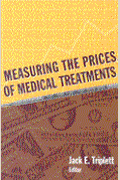What’s the latest thinking in fiscal and monetary policy? The Hutchins Roundup keeps you informed of the latest research, charts, and speeches. Want to receive the Hutchins Roundup as an email? Sign up here to get it in your inbox every Thursday.
Some low- and middle-income students pay less in university tuition today than 10 years ago
Although sticker prices on tuition have steadily increased at public two- and four-year colleges and universities over the past several decades, the changes in net tuition paid (tuition minus grant aid) vary substantially by family income and institution type, say Emily E. Cook of Tulane and Sarah Turner of the University of Virginia. In fact, for students with family incomes below $30,000, tuition at four-year universities increased by 32.6% between 2008-09 and 2018-19, but net tuition increased by only 4.5%. Moreover, they find that at institutions with the highest levels of research activity (typically flagship public universities) low- and middle-income students see lower net tuition today than a decade ago. The authors find evidence that “high-tuition, high-aid” model employed at public research universities allows for more price discrimination by family circumstances than at non-research four-year institutions, that price discrimination has increased at research-heavy universities in the last decade, and that these changes are not driven by changes in state appropriations for education. This model may be a more cost-effective way of making sure college is affordable, they conclude, although public universities continue to face challenges in communicating the availability of aid to low-income families.
Stimulus checks boosted the stock market
The federal Economic Impact Payments distributed during the pandemic were followed by increases in retail trading and the share prices of retail-dominated portfolios, find Robin Greenwood of Harvard Business School and Toomas Laarits and Jeffrey Wurgler of NYU Stern. By examining social media posts and credit card spending data, the authors identify the dates that disbursements arrived in consumers’ bank accounts. They document an 8% increase in the retail share of value-weighted trading activity in the three-day window following these dates, with especially high activity in stocks that had previously been preferred by retail investors. The authors find that a portfolio of retail-friendly stocks would have outperformed the market by around 5%-7% following the first two rounds of payments. However, they find no effect in that metric for the third round. The authors show similar results for Hong Kong’s Cash Payout Scheme in July 2020, documenting increases in market trading volume and prices on stock exchanges in Hong Kong and mainland China.
New survey says about half of all workers work from home at least once a week
Fielding a new survey with Gallup, Erik Brynjolfsson of Stanford and co-authors find that in October 2020 31.6% of continuously employed workers always worked from home and 22.8% sometimes or rarely worked from home. Overall, they estimate that about half of the U.S. workforce currently works remotely at least one day each week. The authors argue that remote work is underestimated by over 30 percentage points in the Current Population survey (CPS). The results also differ from other surveys, though far less. Some of the surveys, including the CPS, exclude workers who worked from home before the pandemic, accounting for the bulk of the discrepancy. In addition, industry composition plays a role, as does whether the surveys are done by web or mail and whether they include the self-employed.
Chart of the week: Prices of goods soar and prices of services rise, too
Chart courtesy of the Wall Street Journal
Quote of the week:
“Inflation remains well above our longer-run goal of 2%. Aggregate demand is strong, and bottlenecks and supply constraints are limiting how quickly production can respond. These supply disruptions have been larger and longer lasting than anticipated, exacerbated by waves of the virus here and abroad, and price pressures have spread to a broader range of goods and services. Additionally, higher energy prices are driving up overall inflation. The surge in prices of crude oil and other commodities that resulted from Russia’s invasion of Ukraine will put additional upward pressure on near-term inflation here at home,” says Federal Reserve Chair Jerome Powell.
“We understand that high inflation imposes significant hardship, especially on those least able to meet the higher costs of essentials like food, housing, and transportation. We know that the best thing we can do to support a strong labor market is to promote a long expansion, and that is only possible in an environment of price stability. As we emphasize in our policy statement, with appropriate firming in the stance of monetary policy, we expect inflation to return to 2% while the labor market remains strong. That said, inflation is likely to take longer to return to our price stability goal than previously expected.”
The Brookings Institution is financed through the support of a diverse array of foundations, corporations, governments, individuals, as well as an endowment. A list of donors can be found in our annual reports published online here. The findings, interpretations, and conclusions in this report are solely those of its author(s) and are not influenced by any donation.
The Brookings Institution is committed to quality, independence, and impact.
We are supported by a diverse array of funders. In line with our values and policies, each Brookings publication represents the sole views of its author(s).









Commentary
Hutchins Roundup: Tuition increases, stimulus checks, and more
March 17, 2022